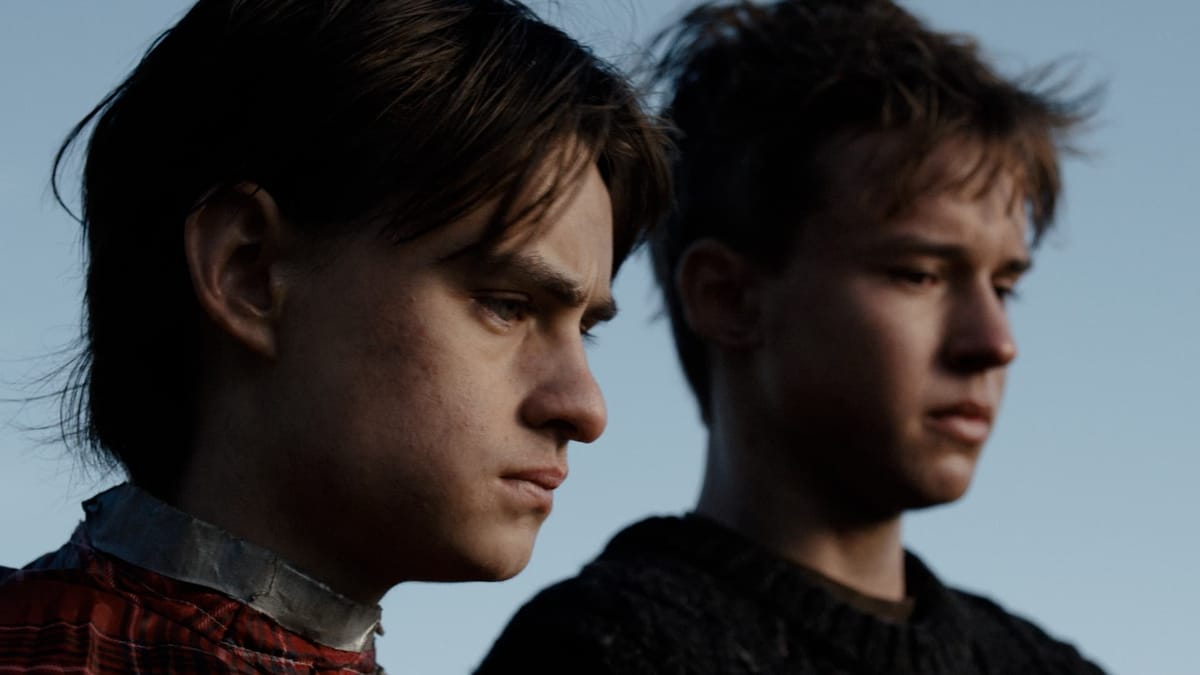Arcadian
Being the single parent of two teenage boys seems stressful in the best of times, never mind in a post-apocalyptic hellscape.

During the dark days of 2020, when the world was being ravaged by the COVID-19 pandemic, a divide emerged. There were those who devoured all the media they could about disease outbreaks, both narrative and non-fiction, seemingly indulging that aspect of the human psyche that cannot help but stare into the void. It’s this attitude which drove the renewed popularity of films such as 2011’s Contagion. Then, there were the people who wanted nothing to do with stories even vaguely on the topic, and certainly didn’t want to see any new stories which included characters wearing face masks, yanking them out of their escapist entertainment and back to the real world. The movie industry itself seemed to prefer the escapist route, as even those produced during the pandemic rarely even depicted characters in masks, never mind acknowledging the entirety of the situation.
With the benefit of a little bit of separation, we’re solidly in an era of art attempting to wrestle with what that experience was, what it did to us, what it meant, and how its effects are still being felt today. Of course, for many, the whole ordeal served as a wake-up call of where we might be headed. Instead of looking to understand what it did do, they envision a future in which to play out their fears, to imagine how people would live and relate and the challenges they would face. These stories serve as thought experiments, and mostly end up hopeful, at least with regards to people’s fundamental nature if not the health of the world.
Arcadian takes a hybrid approach to this post-apocalyptic nightmare. The characters are unsure of what caused the world to fall apart fifteen years ago. In an incredibly clunky bit of exposition framed as a game in which Thomas and Charlotte (Maxwell Jenkins and Sadie Soverall) tell 10-second stories of what caused the apocalypse, disease is floated as a possible cause. But then, so is some mysterious purple haze which turned people into monsters. And the opening scene alludes to a battle against an unseen enemy. It’s a choose your own adventure of misery, all of it pointless nonsense that has no bearing on the plot. Instead, it highlights the core problem: this movie is so focused on justifying its existence that it wholly distracts from the things it actually cares about.
It never explores the various themes that crop up throughout. They’re all fairly cookie cutter, especially in a post-apocalyptic scenario. Stuff like found family taking multiple forms, welcoming people turning hostile when things get bad, and not appreciating what you have until it’s gone. But there’s no reason to not use our familiarity as a tool, affording you flexibility in execution and an opportunity to layer in some more complex character dynamics. Instead, Joseph (Jaeden Martell) is smart and good with machines.
Despite these detours, it wants to be a straight up monster movie. A story of survival set in the countryside, a place where other people are far and few between, where they must be resourceful in order to make it to the next day, including reinforcing their doors and windows each night, and repairing the damage done the next morning. The movie does a good job of not showing us the creatures or even giving us any sense of their nature until well into the story, although we do feel the danger they present. No, we don’t have any idea why they’re trying to break into their house, but whatever. It’s legitimately haunting to imagine what they are - well, until the idea they might be transmogrified humans makes it somewhat laughable.
Their eventual reveal still manages to be pretty cool, though. They’re well designed creatures, complete with a unique and abrupt form of attack making them terrifying again.
…when the cinematography allows you to see them. Because the worst thing about this already medicore film is its camerawork.
The entire movie is filmed in shaky cam. It looks like someone is walking around with a handheld camera, the constant sizable jolts and jerks demonstrating no attempt to keeping the frame steady, often turning quickly and imprecisely, frequently horribly out of focus. While this can be used to great effect, it’s best deployed sparingly, in specific scenes where the lack of polish makes the events read as more authentic. That is, not from start to finish. Even worse, much of the movie features low light levels, taking place indoors or in the forest, often at night. The combination makes it quite difficult to follow what’s happening. You get the broad strokes, sure, but it really prevents you from appreciating what’s on screen. I’m not sure why, either. There’s no conceit to justify it, frustrating the ability to understand why they chose this path. Of course, that points to budget, to which I’d say you need to make your movie in a way that supports the budget you have, not the budget you wish you had. If I was the production designer or monster animator, I’d be pissed that my work was being obscured by such a misguided decision.
Arcadian isn’t without merit, it just goes to great lengths to make those bright spots harder to appreciate. I haven’t even had cause to mention Nicolas Cage’s role as father to Thomas and Joseph, as while he does as good a job as ever, he’s not given all that much to do. And immediately after an emotional climax, right as things should be ramping into the third act, and we’re about to bottle all the rage and despair into a thrilling conclusion that at least convinces us this was for something…the credits roll, leaving us feeling profoundly unfulfilled.